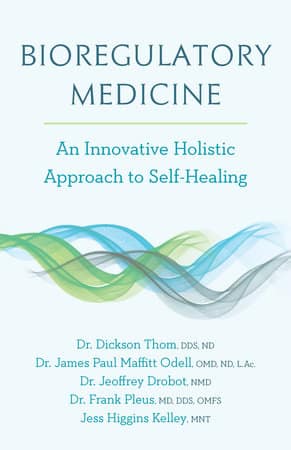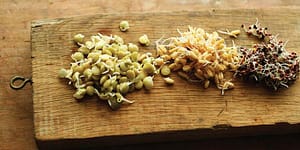Modern Diseases and the Rise of the Allopathic Model

Chronic and degenerative illnesses are largely new to mankind. In fact, diseases such as cancer, diabetes, fibromyalgia, and multiple sclerosis have been termed modern or man-made diseases because they were relatively rare until three hundred years or so ago.
But if these diseases are relatively new, why are so many people plagued with chronic illness? And what are the root causes that we need to be focusing on to cure them?
The following excerpt is from Bioregulatory Medicine by Dr. Dickson Thom, Dr. James Paul Maffitt Odell, Dr. Jeoffrey Drobot, Dr. Frank Pleus, and Jess Higgins Kelley. It has been adapted for the web.
The term chronic illness (versus acute illness, such as the bubonic plague or a broken arm) comes from the Greek god of time, Chronos, and can be defined as an illness that persists for a long time, usually more than three months, and is often slow in its progression. The environment for these illnesses can be set early; many chronic diseases have traceable roots in childhood. Cancer, for example, can take decades of development before becoming a diagnosable mass. Chronic illnesses, such as Alzheimer’s disease, start with a degenerative process—a gradual deterioration of specific tissues, cells, or organs. This causes loss of function or structure—for the mind in Alzheimer’s, the bones in osteoporosis. Little by little things get worse.

The modern diseases we face are multifactorial, meaning they are caused by many contributing factors with dysregulation and degeneration at their roots. Dysregulation is caused when our bioregulating systems are pushed away or blocked from the normal state of balance, or homeostasis. Common symptoms of bioregulatory dysregulation can include allergies, inflammation, pain, headaches, exhaustion, depression, tension, sleeplessness, indigestion, and recurrent infections. These classic symptoms are often a response to an overload of prescription drugs, toxic chemicals, pollution, poor-quality or allergenic foods, psycho-emotional stress, lack of exercise, nutrient deficiencies, and dental infections—all of which can damage the mitochondria when they persist over time. Pharmaceutical medications are now also known as a major contributor to mitochondrial damage, which explains all the adverse (also known as “side”) effects. In fact, all classes of psychotropic drugs, as well as statin medications and analgesics such as acetaminophen, have been documented to damage mitochondria.3 Considering that many people with chronic illness have been on these drugs for years, and sometimes for decades, we’re talking about a high level of mitochondrial damage.
The allopathic medical model’s staunch dogmatic entrenchment in the one-size-fits-all drugs-for-everyone paradigm isn’t getting to the energetic roots of modern diseases. This model implies that if you take a Tylenol for a headache and the pain goes away, you can assume the headache was due to a Tylenol deficiency. Yet estimates show that 85 percent of chronic and degenerative diseases are rooted in adaptable elements such as diet, lifestyle, mitochondrial function, and emotional well-being. And this model is exactly why we are losing the war on cancer, why multiple sclerosis patients slowly but surely lose significant function, and why chronic fatigue syndrome has become the biggest blanket diagnosis of our time. Headache? Take a Tylenol. Backache? Have some oxycodone. Prevention is not the focus and palliation is not a cure, because when you stop taking the drug, the symptoms return. The immediate-gratification, take-two-aspirin-and-call-me-in-the-morning allopathic approach doesn’t cure chronic or degenerative illnesses. We deserve better medicine than this.
Yet without even realizing it, we’ve become entrenched in allopathy. Since the widespread adoption of the current health care model in the 1960s (when HMO and private insurance were introduced during the time of President Nixon), medical costs have escalated as much as fifteen-fold, while rates of chronic disease are projected to increase more than 50 percent by 2023. We’ve spent significant amounts of money, but not much progress has been made. The US health care system is ranked the worst among the eleven developed nations. Meanwhile, Canada, Denmark, Sweden, Switzerland, and Germany top the charts. What are they doing differently? Many things, of course, but the commonality between these other countries is the use of bioregulatory medicine practices. In the United States it’s time for a more comprehensive and sophisticated medical model, one especially adapted to the current complexities of chronic illnesses. The “just wait until it’s broken,” with little regard to prevention or sharpening health, is a sick-care model that no longer satisfies most US citizens. But do we even know what true health is anymore?
What is Health, Anyway?

Of course, there’s no money in preventing disease. US drug sales are projected to reach $610 billion by 2021.4 It is no stretch of the imagination to say that true and lasting health promises little financial gain. When allopathic medicine does embrace prevention, it’s usually in the form of profitable pharmaceuticals or screenings: baby aspirin to prevent cardiovascular disease, statins to prevent high cholesterol, annual flu shots, the list goes on. Radiation-based screenings such as mammograms, which can confer false positives and have even been shown to be a cause of breast cancer, are generally the only breast cancer prevention option presented to women.5 But this is not prevention, it’s almost a preparation for the disease. Pills, vaccinations, and screenings are only aimed at finding a diagnosable condition that will convert into profit-making conventional treatments such as drugs, surgery, or radiation. The allopathic focus of health is truly on disease. It is a disease-centric model.
In direct contrast, bioregulatory medicine views health as much more than merely the absence of symptoms or disease. Instead, in BioMed, health is defined as a state of “complete physical, mental, and social well-being.” Well-being is defined as a “mode of being comfortable, balanced, mindful, healthy, and happy.” Health is an optimized state of balance that permits a person to achieve their ultimate or highest purpose. It’s not about feeling just okay, it’s about feeling your best. Bioregulatory medicine is a model centered on both health and prevention, taking into full account a phrase from the Hippocratic Oath: I will prevent disease whenever I can, for prevention is preferable to cure. The diagnostics and screenings used in bioregulatory medicine draw upon nontoxic technologies that also take into account the cross talk between bioregulating systems. For example, a heart rate variability monitor and assessment device can determine how stress (which we all have) is affecting both the heart and the nervous system, and this data can predict potential future health problems. This test takes about five minutes and is completely noninvasive.
Notes
1.Douglas C.Wallace,“A Mitochondrial Paradigm of Metabolic and Degenerative Diseases, Aging, and Cancer:A Dawn for Evolutionary Medicine,” Annual Review of Genetics 39 (2005): 359.
2. Steve R. Pieczenik and John Neustadt,“Mitochondrial Dysfunction and Molecular Pathways of Disease,” Experimental and Molecular Pathology 83, no. 1 (2007): 84–92, doi:10.1016/j.yexmp.2006.09.008.
3. J. Neustadt and S. R. Pieczenik,“Medication-Induced Mitochondrial Damage and Disease,” Molecular Nutrition and Food Research 52 (2008): 780–88, doi:10.1002/mnfr.200700075.
4. “Medicine Use and Spending in the U.S.,” IQVIA, May 4, 2017, https://www.iqvia.com/institute/reports/medicines-use-and -spending-in-the-us-a-review-of-2016.
5. James Raftery and Maria Chorozoglou,“Possible Net Harms of Breast Cancer Screening: Updated Modelling of Forrest Report,” BMJ 343 (2011): d7627, doi:10.1136/bmj.d7627.
Recommended Reads
Recent Articles
Easy rainbow coleslaw! Transform your salad game with this colorful recipe. It is surprisingly packed with flavor and is a great addition to your repertoire.
Read MoreLearning how to ask questions that will elicit relevant information is as much an art form as creating an herbal formula. Follow this broad list as a starting point.
Read MoreWant to start your own medicinal herb garden? Passionflower, lemon balm, and goldenseal are great places to begin! These herbs are jam-packed with medicinal properties and easy to grow in a majority of climates.
Read MoreSprouts are easy to cultivate, mature quickly and pack a nutritional punch! You can make nutrient-rich sprouts from all kinds of edible seeds in your kitchen.
Read More








